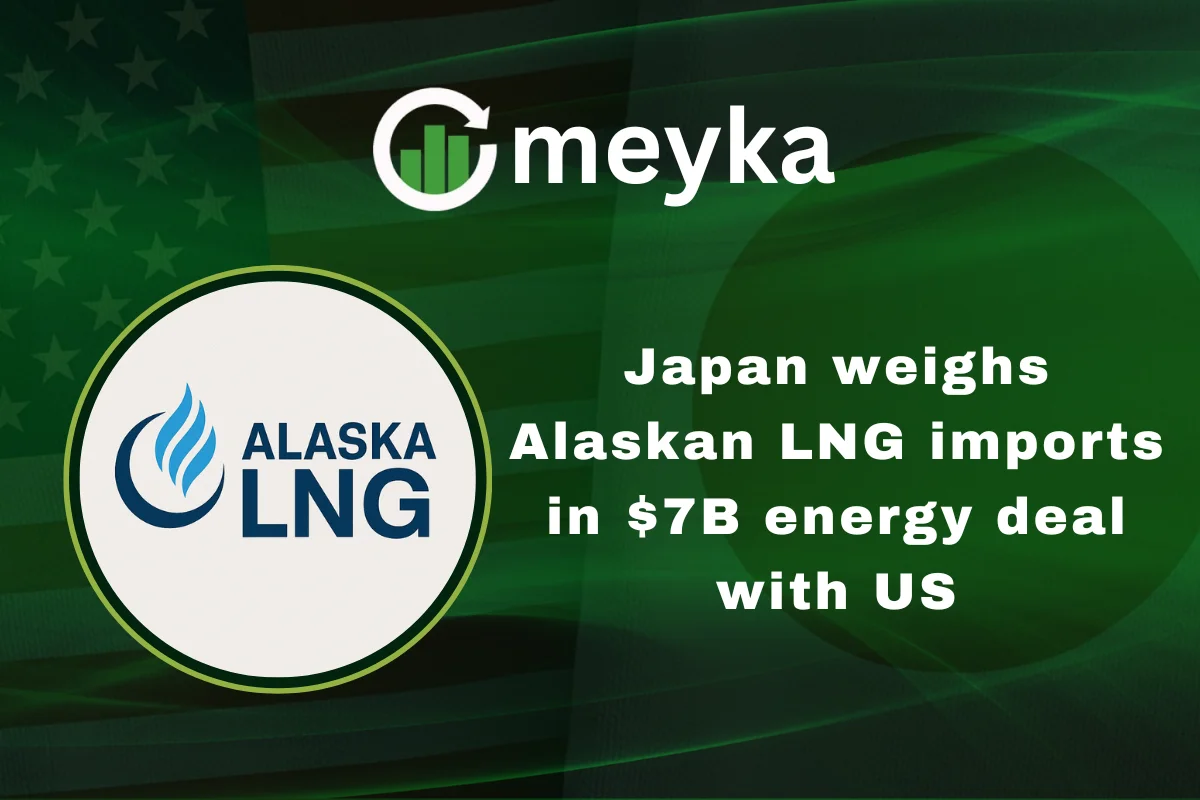Japan Weighs Alaskan LNG Imports in $7B Energy Deal with US
Japan, one of the world’s largest importers of liquefied natural gas, is now looking toward the United States as a stable and long-term partner. Recent talks around a $7 billion Alaskan LNG deal highlight a major shift in global energy trade. This potential agreement could reshape supply chains, strengthen alliances, and ensure energy security at a time when Asia’s demand is only growing.
Why Japan Is Turning to Alaskan LNG
Japan has traditionally relied heavily on Middle Eastern and Southeast Asian countries for its LNG supply. However, recent geopolitical tensions and market volatility have exposed the risks of over-dependence on certain regions. The United States, with its growing LNG capacity, is seen as a more reliable partner.
The proposed Alaskan LNG project would not only diversify Japan’s energy imports but also reduce risks linked to unstable supply lines. Alaska offers the advantage of shorter shipping routes to Japan compared to the Gulf Coast, cutting transport times and costs significantly.
By investing in this partnership, Japan seeks to secure long-term contracts, guaranteeing steady access to LNG for decades ahead.
The Strategic Importance of Alaska in Global Energy
Alaska’s location makes it uniquely valuable. Situated close to Asia’s major economies, it provides a direct link between North American energy producers and Asian buyers. Unlike exports from the U.S. Gulf Coast, which must pass through the Panama Canal, shipments from Alaska can reach Japan, South Korea, and China more quickly and with fewer risks.
Additionally, Alaska’s LNG development could provide a new stream of revenue for the state. The project has the potential to transform the regional economy by creating jobs, expanding infrastructure, and placing Alaska at the center of global energy trade.
The $7B Deal: What It Means for Both Sides
For Japan, this deal represents more than just energy. It is about energy security, economic stability, and strategic diplomacy. By securing LNG from a close ally like the United States, Japan reduces dependence on politically unstable regions while also supporting cleaner energy compared to coal or oil.
For the United States, and particularly Alaska, the deal opens access to one of the world’s largest LNG markets. It creates a steady demand pipeline, ensuring the sustainability of massive infrastructure investments. This strengthens America’s role in the Asian energy market and deepens economic ties with Japan, a key ally in the Indo-Pacific.
Impact on the Global LNG Market
If finalized, the deal would send a strong message to the global energy sector. It highlights Asia’s growing appetite for LNG, which is expected to rise steadily through 2040 as countries transition from coal to cleaner alternatives.
The agreement could also reshape trade flows. With Alaska supplying LNG to Japan, it may ease congestion in global routes and create new benchmarks for pricing. Competitors like Qatar and Australia may face greater pressure to offer more competitive terms to maintain their market share.
For investors and energy companies, this development signals new opportunities. As interest in AI stocks and stock research continues to rise, investors may also look closely at energy-related equities. LNG infrastructure, shipping companies, and U.S. energy firms could see increased attention in the stock market as Japan finalizes its strategy.
Japan’s Energy Transition and Climate Goals
Japan’s commitment to reducing carbon emissions is a key factor in this deal. The country has pledged to reach net-zero emissions by 2050, and LNG plays an important role in this transition. Compared to coal, LNG produces far fewer emissions, making it a critical bridge fuel as Japan increases renewable energy capacity.
The Alaskan LNG partnership aligns with these climate goals. It ensures Japan’s industries and households have stable access to energy while the country gradually shifts toward solar, wind, and nuclear power.
Challenges Facing the Alaskan LNG Project
While the deal sounds promising, there are challenges. The infrastructure required to liquefy, transport, and store LNG is massive and expensive. The $7 billion figure represents a significant investment, but critics argue that costs could rise further due to inflation, supply chain issues, and regulatory hurdles.
Environmental concerns are also at play. Some groups worry about the ecological impact of large-scale LNG projects in Alaska, especially in sensitive Arctic regions. Balancing development with environmental protection will be a major test for both the U.S. and Japan.
Despite these challenges, momentum for the project is strong. Japan’s energy needs and the U.S.’s production capacity create a compelling case for moving forward.
Geopolitical Significance of the Deal
This energy partnership is more than just an economic transaction; it is a symbol of U.S.-Japan cooperation. In an era where energy security is becoming increasingly tied to global politics, Japan’s decision to lean on the United States strengthens its alliance.
It also reduces Japan’s vulnerability to supply disruptions caused by conflicts in the Middle East or shifts in Russian energy exports. By choosing Alaskan LNG, Japan sends a clear message: reliable, long-term energy security is best achieved with trusted allies.
Future Outlook for Alaskan LNG Exports
The Alaskan LNG project could pave the way for more U.S. energy exports to Asia. If successful, it may encourage similar projects and create a stronger North American presence in the Asian energy market.
For Japan, this deal is a crucial step toward balancing its energy mix, achieving climate goals, and maintaining stable growth. For the U.S., it is an opportunity to strengthen economic and diplomatic influence in the region.
Looking ahead, global demand for LNG is only expected to grow. As Asia transitions from coal, the United States, with its vast natural gas reserves, is well-positioned to meet that demand.
FAQs
Japan views Alaska as a strategic supplier due to its proximity, which reduces shipping times and costs. It also views the U.S. as a stable and reliable partner compared to other regions.
The deal boosts U.S. energy exports, creates jobs, strengthens infrastructure investment, and deepens ties with one of its most important allies in Asia.
Yes. Increased supply from Alaska could influence pricing, create new benchmarks, and intensify competition with other LNG-exporting nations, such as Qatar and Australia.
Disclaimer:
This content is made for learning only. It is not meant to give financial advice. Always check the facts yourself. Financial decisions need detailed research.






